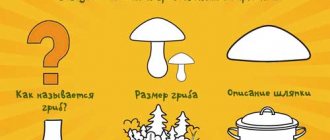Brief summary of the tale
Three old friends Bubble, Straw and Lapot go to the forest to chop firewood. Together they walk along the path until they suddenly notice the river. There is no way out - you will have to somehow cross or swim across it. You can’t go back, there’s no time to retreat. So they start thinking about a plan.
Lapot offers to swim across the river on Bubble, since he obviously won’t drown. But Bubble refuses this idea. He invites Laptya to cross the river along the Straw. This idea does not meet with support from friends, but there is no other way out, I have to agree. Then Lapot began to walk slowly along the Straw. Of course, she broke under his weight. Lapot fell into the river, and Bubble laughed so much that it burst. As a result, the friends were unable to cross the river.
But if they had thought through the plan in advance, weighed the pros and cons, and reasoned, then they would have been able to pass the river with ease. The bubble would be perfect as a flotation device. Obviously it would be much better than letting the heavy Lapot cross the river along the Straw. It turns out that all they had to do was competently coordinate their actions as a team. The task wouldn't be so difficult.
Preliminary work:an adult teaches children to count within eight; teaches to compare the number of homogeneous objects using the application method and the visual correlation method.
Objectives of
the lesson
Educational
— to develop learning skills (correct working posture at the table when drawing, perseverance, accuracy in work); stimulate the development of children's creative individuality; cultivate a sense of camaraderie, a desire to help friends, to help them out in trouble.
Educational
— improve general, fine and articulatory motor skills of children; learn to hold a pencil correctly, draw straight and arced lines, paint a figure without going beyond the outline; introduce the words “above”, “below”, “in the middle” into the children’s dictionary; maintain counting within eight, the ability to compare the number of similar objects; consolidate the names of geometric shapes in the children’s active dictionary: “circle”, “oval” and “straight line”; to develop the ability to correlate figures from counting sticks and their image on a sheet of paper in a large square.
Developmental
- develop children's auditory and visual attention; train reaction speed; develop logical thinking - the ability to compare and reason.
Equipment:
unfinished images of Straw and Bubble according to the number of children;
picture “Bawl shoes in the river” by the number of children;
colour pencils;
ball;
easel (board);
demonstration drawing - a sample image of fairy-tale characters from counting sticks according to the number of children;
a set of counting sticks;
checkered sheets of paper (the size of one square is 2×2 cm) with geometric shapes marked with dots according to the number of children.
Progress
of the lesson
1. Organizational moment. Tell the children: “We stood on the meadow and made a circle.” (Children and the teacher stand in a circle.) Ask the children what performance they showed in previous classes. Ask if they have been to a real theater and what performances they have seen.
2. “Rescue Pencils.” Announce the topic of the lesson. Tell the children that the “rescuer pencils” came to the aid of the heroes of the fairy tale “Bubble, Straw and Bastfoot” in difficult times. Invite the children to help the “magic” pencils save unlucky travelers.
Give the children the picture “Unfinished Picture of a Straw” and crayons. Invite the kids to “cure” the Straw - to do this, draw a line with a pencil so as to connect the two parts of the broken torso of the Straw, and then color it, choosing the color of the pencil yourself. Then invite the children to show where the Straw is up, down, and in the middle. Which part was the Straw broken?
Give the children another picture—“An unfinished image of a Bubble”—and ask them to help the Bubble by completing the picture so that it turns from a semicircle into a whole circle. And then paint it any color you like. When the drawings are completed, ask the children what color and shape their Bubbles turned out to be. Specify that they all have the same shape (round), but the color is different (multi-colored).
Show the children the third picture - “Lapt in the river” - and tell them that Lapot fell into the water - he may drown if he is not helped in time. Invite the children to color the picture so that Lapot is not under water, but on the water. (If you paint the water blue, and Lapot yellow or brown, then he will not be under water, but on the water and will be able to swim to the shore himself.)
(This part of the lesson can be carried out taking into account the individual capabilities or desires of the children. In this case, each child receives not three tasks, but only one of them - the one that the teacher offers him, or the one that the child chooses himself.)
An outdoor game with a ball “Drowning or not drowning.” Invite the children to go out onto the meadow and make a circle. Take the ball yourself and stand in the center of the circle. Explain to the children the rules of the game: “I will throw the ball to one of the children and at the same time name an object. If the named object does not sink in water, you need to catch the ball. If the object sinks, then the ball cannot be caught, and it falls to the floor.” An approximate list of items to be listed: an axe, a ball, wood, scissors, a brick, a balloon, a float, a stone, a lifebuoy, etc.
Construction from counting sticks. Invite the children to use counting sticks to make characters from the fairy tale “Bubble, Straw and Bast.” Place on an easel (board) a sample image of a Straw (a straight line of four-counted sticks), a Lap (an oval of six sticks) and a Bubble (a circle of eight-counted sticks).
Ask the children what geometric shapes the Bubble, Lapota and Straw remind them of.
Ask the children how many sticks it will take to lay out the Straw, Lap, and Bubble. Let the children count and compare their numbers, using the words “more by”, “less by”.
Then give the children four counting sticks and ask them to lay out a Straw from them, then give six sticks for laying out a Lap, and finally eight sticks for depicting a Bubble.
(This part of the lesson can be carried out taking into account the individual capabilities and desires of the children. In this case, each child receives not three tasks, but only one of them - the one that the teacher offers, or the one that the child chooses himself.)
5. Drawing by cells. Invite the children to draw the characters of the fairy tale in boxes according to the sample from the counting sticks. To help, mark the beginning and end of each line in advance with dots on checkered paper (Fig. 10, p. 24).
When the graphic tasks are ready, invite the children to turn (complete) each geometric figure into one of the heroes of the fairy tale, and then tell which figure made who: “A circle made a Bubble, an oval made a Lapota, and a straight line made a Straw.”
6. Summing up the lesson. Appreciate the children's work positively .
Bubble, straw and bast shoe. What happens to 1C programmers
Everything said in the text is purely my personal opinion (so, just in case, I’ll clarify). There are such things in the world - they are called 1C franchises. These are partners of the 1C company who sell its software products, help implement and operate them, and know how to modify them to suit the customer’s needs. So, these Frenchies have gone through a rather funny transformation over the course of several years.
As it was before. The client had a problem - he called the French service, a programmer came to him, sorted it out, and solved the problem. Either on the spot, or he took it with him and returned with a solution a few days later.
Nowadays this almost never happens. In most cases, you will have to work with three funny characters - a bubble, a straw and a bast shoe. Consultant, analyst and developer.
As it was before
Let me explain in a nutshell who used to work in the franchises.
At the dawn of justice, when franchises appeared and grew, two types of people came to work in them - programmers and accountants. Programmers, as a rule, were university graduates in relevant specialties - either straight programmers (such as applied mathematics), or engineers who also studied programming (such as the Faculty of Instrument Engineering). Occasionally we came across smart dudes from technical schools and self-taught people. There were almost no random people - so, as part of the experiment, they were taken in, but quickly kicked out. The programmers, of course, experienced culture shock from the first months of working in France, because... I had to communicate a lot with users and understand subject areas - accounting, production, trade, payroll, etc. But, being intelligent people by nature, they coped with new knowledge quite quickly. In addition, the 1C platform was created to solve business problems, therefore it contains all the necessary abstractions - there was no need to figure out how to organize the principle of double entry in a bare DBMS, all the necessary types already existed.
Much less often, and not immediately, accountants came to the franchise. In fact, these are former clients of the franchise - smart girls (well, it’s not my fault that accountants are mostly girls) who knew the theory and methodology, and then managed to understand 1C programs. Well, they decided that this knowledge and skills could be sold for more than the salary at a factory or in a beer stall.
At first, the French didn’t know how to use these girls and tried to turn them into programmers. But they quickly realized that there was no point in this - it was their knowledge and spiritual kinship with users - the same accountants - that needed to be sold. They called them consultants (or simply cons), and began to load them with the corresponding work.
They shared it like this. Cons does the methodologically complex work, the programmer does everything else, including programming. Both were present on the projects for synergy.
Somewhere in the process, paladins appeared - programmers who were very well versed in accounting methods. As a rule, accounting and management. These guys could do almost anything.
The consultants were of high quality for one simple reason - they came from the profession for which they were going to advise. Accordingly, it is easy to explain why in the French there is still not a single decent consultant, for example, in production - not a single successful production worker has yet thought of going to work in the French.
Everyone was satisfied and happy, but the market was growing quickly, and there was a catastrophic shortage of specialists. The flow of programmers from universities who wanted to work in 1C was less than the market demand. The flow of smart accountants has almost dried up, because... the profession is almost extinct: a modern young accountant with an education is, in fact, a 1C operator.
Without thinking twice, we did the same thing as the whole programming world with a shortage of resources - we lowered the threshold for entering the profession. This is where our characters appeared.
Now it’s not a programmer or an accountant who comes to work in France, but just a person. Who will come out of it is decided in the process. A kind of kinder surprise.
Consultant (bubble)
Cons are now people who have more or less understood some 1C program.
For example, in accounting or payroll. Let me emphasize - it is in the program, and not in the methodology underlying the program. Of course, they learn some of the methodology in the process of studying the program, but not in detail. What saves them is that users also no longer understand accounting methods. Previously, an accountant who didn’t know 1C well (from the customer’s side) and an accountant who knew 1C well (from the front end) had a conversation. Now two operators are talking, one just spent more time poking around in the program.
Consulting is also carried out at random. The user asks a question like “why don’t my transport tickets close to zero?” An early consul would simply say that this is what the law says - if TZR are not included in the cost of goods, then they are closed in proportion to the cost of goods sold. The current cons says “I’ll call you back” and goes to poke around in the program and look for an answer on the Internet.
Such cons especially infuriate chief accountants, finders, chief economists, commercial directors, etc. – they are still from the old school, and the position obliges them to understand the profession. If earlier they could talk to the cons in their own language, identify the problem and hear possible solutions, now they are simply “taken off the task” - roughly speaking, they take notes and shorthand their words, so that later they can “think” and poke around - in the program and on the Internet .
The funniest thing is the result of the work of the cons. In most cases, it sounds like “a specialist needs to be involved.” This is either an analyst (straw) or a developer (bast shoe). True, you have to pay for poking the cons.
Developer (bast shoe)
The 1C developer is a rather strange creature.
There are several legends about how these little animals appeared on our planet; I will write a separate article about this. The point is simple: a 1C developer is a piece of a 1C programmer. The piece that can write code. He doesn’t know how to talk to the user, doesn’t know how to come up with a solution architecture, doesn’t know what his improvements will affect, and doesn’t know accounting methods. He simply writes code according to the task that was written for him, indicating table names and metadata, behavior scenarios and user interfaces.
There was a time when 1C developers were very tormented by the question of how they differed from 1C programmers. Being a piece of a specialist is not interesting, so bright, clear, well-packaged differences were needed.
The first discovery was “development standards”. The beauty, however, is that these standards were drawn up by programmers - based on the experience of pioneers. Accordingly, programmers had these standards in their blood, and developers had to teach them.
The second discovery was the library of standard subsystems (BSS) - a large set of basic functionality for any 1C program. Guess who made the BSP? The same programmers, with the same experience as pioneers, when they were tired of carrying around a zoo of different implementation options for the same thing (such as authorization, working with mail, reporting mechanisms, etc.). The developers, accordingly, sat down to teach all this.
Well, the third find, or rather a whole bunch, was made by the Internet. And not only for 1C developers, but also for everyone involved in IT. This is a wide range of beautifully packaged techniques for anything about IT, such as devops, scrum, technical debt management, scenario testing, digitalization, BI, big data, etc. The percentage and quality of application of this knowledge in real life by 1C developers is approximately the same as in the big IT world - something around zero.
However, no one will ever ask about the real application. It’s enough to say “I know development standards, BSP and Devops” - and you are a 1C developer.
So, a developer is someone who writes the code. A developer also knows how to “find a place in the code” - this is when he helps the cons. Cons used the random method, couldn’t understand the behavior of the program, “involves the developer” - he goes into the code and tries to understand what the checkbox affects, what the button does and why everything is red.
True, the developer and the cons understand each other poorly. When a developer finds a place in the code, he can explain its meaning in terms of language, objects and types, but the cons does not speak this language. To talk, they need a translator, a straw through the stream of misunderstanding - an analyst.
Analyst (straw)
An analyst in 1C is also a piece of an early programmer.
The piece that knew how to understand the structure of metadata, algorithms and data flow processes, settings, solution architecture and, most importantly, make changes to it. The “analyst” piece was present in solving almost any task that a 1C programmer did. This is the same part of the problem solving process as testing, writing and debugging code, demonstrating to the client, etc. It was as natural as writing code with your hands instead of your ass. Therefore, it never occurred to anyone to package 1C analyst as a separate product.
There are two types of 1C analysts – “it just happened” and wow.
Wow - this is when an early 1C programmer retrained as an analyst and understood the essence of the moment. Developers and consultants appeared who could not agree either with the client or with each other - accordingly, a gaping niche was formed, unoccupied by anyone. Some of the 1C programmers moved there - it was a familiar, simple matter, and, given the blue ocean, very profitable.
“It just so happens” are new analysts who grew up from laborers, economics, law, management students, primary school teachers and former Mac employees. The same ones who just came and got a job in the French. Some “grew up” into consultants, others into developers, and still others into analysts.
The difference between today's consultants and analysts is illusory. This is clearly visible when you read the technical specifications compiled by such an analyst - individually the words are correct, but in total they are such nonsense that you are scared for the country’s economy.
Although, I think there is no need to worry, because... The degradation of specialists is completely balanced by the degradation of users. More precisely, the degradation of customer specialists into 1C users.
How it works now
Now the process of solving the problem works something like this.
A user calls and gets through to a manager. The role of this character has not changed over the years - he will either switch or carefully record the call and pass it on. Next sits the cons - he calls the user back, and together they poke into the program, trying to solve the problem right away. In 99% of cases, nothing works out, the consultant promises to call back and goes to poke into the program on his own. When he gets bored, he calls the developer and asks him to “find a place in the code.” The developer pokes around, only in the code and metadata, finds something, tries to explain to the consul - misunderstanding arises. The name is analyst.
The analyst listens to both and often calls the client again. Then he makes a verdict - it needs improvement (thanks, captain), I'll have to write technical specifications. The information received by the consultant and the developer while solving the problem is thrown into the trash, because the analyst cannot afford to use the data of non-professionals. The client, however, will have to pay for “problem analysis.”
The analyst writes technical specifications, going through the entire path again. Agrees with the client, hands it over to the developer for implementation, and removes himself from the process of solving the problem. If, or rather, when the developer has questions like “will this really work?” or “but the client seemed to be talking about something else...”, the analyst will say “keep quiet and do it.”
The developer will do it, the cons will go and hand it over. It turns out that it’s not right, not right, and not for that purpose. Football for four will begin - client, consultant, developer, analyst. Everyone is reluctant to delve into the mistakes of their colleagues again, but everyone wants to be paid for their work. The client, however, does not want to pay for the lack of results. But somehow they get out of the hole - either through joint efforts, or with the help of a 1C programmer who will give everyone a slap on the head, call the client and solve the problem.
So, wait, where did the 1C programmer come from?
1C programmers
And they still remained in the bins.
True, in very small quantities. Most fled the profession, but remained in the industry. Someone created their own business (the same franchise), someone does projects in one, someone sat down at a factory as an IT director, but many remained in the franchise. Those that remain work, as a rule, as project managers, less often as department heads or analysts, and even less often as programmers.
And there is an interesting trend - the reverse attraction of clients to 1C programmers. The magic works flawlessly - if the client has worked with a bubble, a straw and a bast shoe, and then talked to the programmer (yes, just talked), then he flatly refuses to return back to the Russian folk tale.
But the client has no choice, 1C programmers are a piece of goods, they are rare and expensive. True, following the return of clients to 1C programmers, corresponding trends appear in the recruitment and training of French personnel - the laws of the market apply. I did this too, looking at the unhappy clients. I don’t know what this will lead to, whether it will somehow affect the market and the quality of services - I really hope that everything will work out.
I didn’t just write to swear - I really love this work. And I worry, looking at what it turns into. Otherwise, soon there will be no one to talk to - only bubbles, straws and bast shoes.





